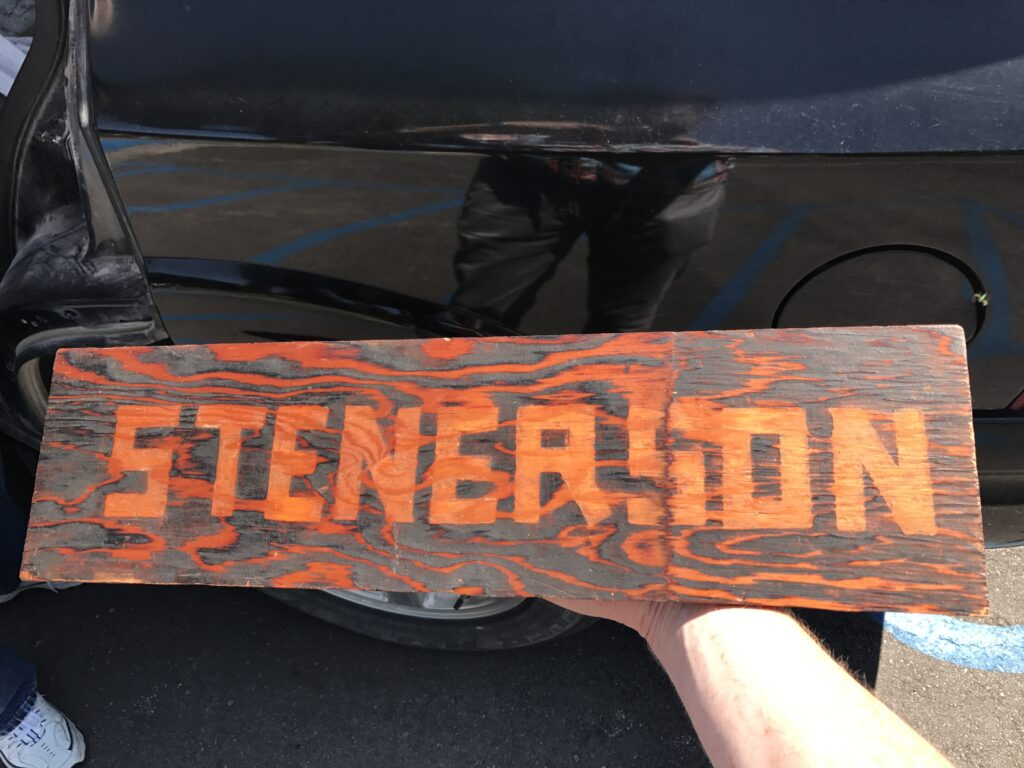clay county histories

Markus Krueger | Program Director HCSCC
One of the coolest things I’ve ever held in my hands is this example of Atomic Pyrography. Pyrography is the art of wood burning. Usually, designs are burned into wood with an electric soldering iron. Roger Stenerson used a nuclear bomb.
Do not try this at home! Mr. Stenerson knew what he was doing. It was his job in the army to study levels of radioactive fallout in the Nevada nuclear test sites of Operation Upshot-Knothole. He told me he got that job because, as a farm kid, he knew how to drive a truck, but I think his degree in physics from Concordia College also had something to do with it. Mr. Stenerson, a retired Glyndon science teacher, has a great sense of humor.
In 1953, we sent Roger, other soldiers, and a whole bunch of scientists out to Nevada to blow up a bunch of atomic bombs to see what happened. They put cars and tanks in the desert at certain distances from the blast. They even built houses and placed mannequins inside, some seated at the dinner table, others sheltered under the basement stairs. Although this was serious scientific and national security work, I’d wager the physicists and generals felt something akin to the anticipatory glee of a kid about to light a firecracker under a toy as they counted down to detonation.
When the radioactive dust settled, Roger and the others walked around the burnt-out cars and rubble to gather data. Mr. Stenerson told me “I knew enough about radiation to be afraid of it, but not to fear it.” Everyone strolling around ground zero had a geiger counter and a color-changing badge to tell them when they’ve been exposed to enough radiation for the day and they needed to go home.
Roger gathered valuable data that measured radiation levels in the dust over certain distances and at certain intervals of time. He also retrieved a wooden board he left behind. He had spelled out his name in aluminum foil on the board. The heat of atomic fission lit the board on fire for an instant before the shock wave of the blast put the fire out. The aluminum foil reflected enough of the heat to leave his name written in unburned wood. Mr. Stenerson assured me it was safe to hold. I trusted him, not just as an expert in the science, but also as a guy who felt the heat of several nuclear and one thermonuclear explosions on his face and is still looking good in his 90s. But I washed my hands thoroughly after we parted.
For more on this topic, see the new exhibit Atomic Alert: Confronting “The Bomb” in the New Atomic Age at the Hjemkomst Center, and learn about local Civil Defense measures in our exhibit The Boom: 1945-60 in Clay County on display at the Moorhead Public Library. And I’ll tell more Roger Stenerson stories in my May 18 presentation Atomic Age Stories: Clay County and the Bomb.

